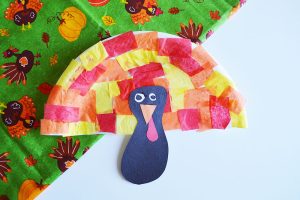
20 Snowman Crafts
Who wants to build a snowman? We do! This week we’ve rounded up some snowman crafts and activities. Each link contains a fun…

2. Visit summer campsites prior to camp, meet counselors before camp begins, and take pictures of camp locations. Make a memory booklet and encourage your child to write in a journal about his summer activities. If he’s not writing yet, ask him to draw pictures. This will be a great keepsake!
3. Walk a taped line imitating a tightrope, learn to juggle, and pretend to walk like different animals in the circus. You can also pretend to make a zoo, jungle, or go on a safari. Walking on all fours to imitate a bear, lion, tiger, dog, or any other animal is great for proprioceptive (heavy work) input.
4. Make a parade with homemade instruments. Visit our Pinterest board for ideas on how to make your own instruments out of paper plates, oat containers, and paper towel rolls. Marching to different rhythms is a fun way to work on proprioceptive input and body coordination.
5. Play charades and act out different sports or occupations. This is a great activity to do as a family or during a playdate. For an added challenge, act out different feelings.
6. Draw letters and numbers using only your fingers on your child’s back. Ask him to guess what you are drawing. Let him practice on your back too.
7. Cross crawling is a great activity to help in right/left coordination and visual-motor skills. Crawl by moving one arm and the opposite leg (right arm/left leg) and then switch (left arm/right leg). Try giving your child directional commands such as: “Touch your left ear with your right hand.” Be creative and encourage your child to give YOU directions as well. Sometimes, playing the teacher is empowering!
8. Evening activities at dusk are fun too. Go on a flashlight scavenger hunt with your child. Use a flashlight to draw different letters and numbers on the ground. Use glow sticks to write letters in the air. Add glow stick liquid to bubbles and have a bubble-blowing competition.
9. Use sidewalk chalk on the concrete or on your trampoline. Ask your child to jump to the letter you call out.
10. Walk like a wheelbarrow in the grass. Hold your child’s ankles, knees, or thighs and ask him to “walk” on his hands. You can place different things such as bean bags or play tools onto his back to “transport” items like a real wheelbarrow does. This is an EXCELLENT activity to add to any sensory diet. It is filled with proprioceptive input/heavy work.
11. Hopscotch, jumping rope, and learning to ride a bicycle are always super summer activities. -Use a spray bottle to spray plants. Squirting each other on a hot day is a fun way to cool down while building hand strength! Here’s a post with tips to boost hand strength and coordination.
If your child is left-handed, check out my earlier post with a FREE download. So many tips for kids who write with their left hand. Give to teachers, therapists, etc.
| My NEW BOOK, The Special Needs SCHOOL Survival Guide….for Autism, SPD, ADHD, Learning Disabilities, Handwriting, Transitions, IEPs Accommodations, 504 Plans, and MORE. |
12. Fine motor tasks such as bead stringing, macrame, puzzles, hunting for treasure in different sensory bins, card games, marbles, making letters in sand, and shaving creme, jacks are all great ways to build fine motor skills.
13. Painting with different items such as leaves, sticks, or cotton balls is fun. Adding tweezers to any task builds fine motor coordination. Instead of picking up cotton balls with his fingers, use tweezers!
14. If your child has difficulty catching a hard ball such as a baseball, use a wiffleball or beach ball-which will move slower and is easier to catch. Playing mini-golf with plastic golf balls is a fun way to build skills without the danger of a real golf ball flying through the yard.
15. Make a book. Cut old magazines and paste pictures onto a book made of construction paper and bound with yarn. Write stories about the pictures or make your own. Even punching the holes (through which to bind the book) with the hole puncher is a great fine motor activity. Make a game of feel and guess.
16. Use an old shoebox and cut a hole for your child’s hand to fit into. Place an item such as a leaf into the box and ask your child to tell you what the item is just by the way it feels. This can be done every season and with many objects such as stones, ice cubes, and seeds. Step by step instructions in this post.
17. Make puppets out of old socks and felt. Put on a puppet show for friends or family. Give your child a treasure hunt list with items such as a butterfly, a cloud shaped like a certain animal, or the sound of a certain bird’s chirp. This should be a multi-sensory treasure hunt involving eyes, ears, touch, and smell.
Want to make emoji puppets? Check out our earlier post for instructions.
18. Plan snacks that relate to different books. Examples include Blue Berries for Sal, Stone Soup, and Bread and Jam for Frances.
19. Set up a store selling different summer items such as beach toys, summer fruits, and vegetables. Encourage your child to make signs for each item and practice making change when something is purchased.
20. Use old sheets and blankets to make tents. Go camping in your living room!
BONUS Finally, plant seeds and watch them grow. Move them from small pots or paper cups into a garden area. Chart their growth in a notebook. Encourage your child to help you with the responsibilities of watering her garden and re-potting when necessary. Caring for something such as a plant can empower a child.
-Make sure to read a great book together (Don’t forget about reading and recommending The Pocket Occupational Therapist for families of children with special needs).
 Most of all, HAVE FUN together! You never know when you are making a memory that your child will have for the rest of his/her life!
Most of all, HAVE FUN together! You never know when you are making a memory that your child will have for the rest of his/her life!


